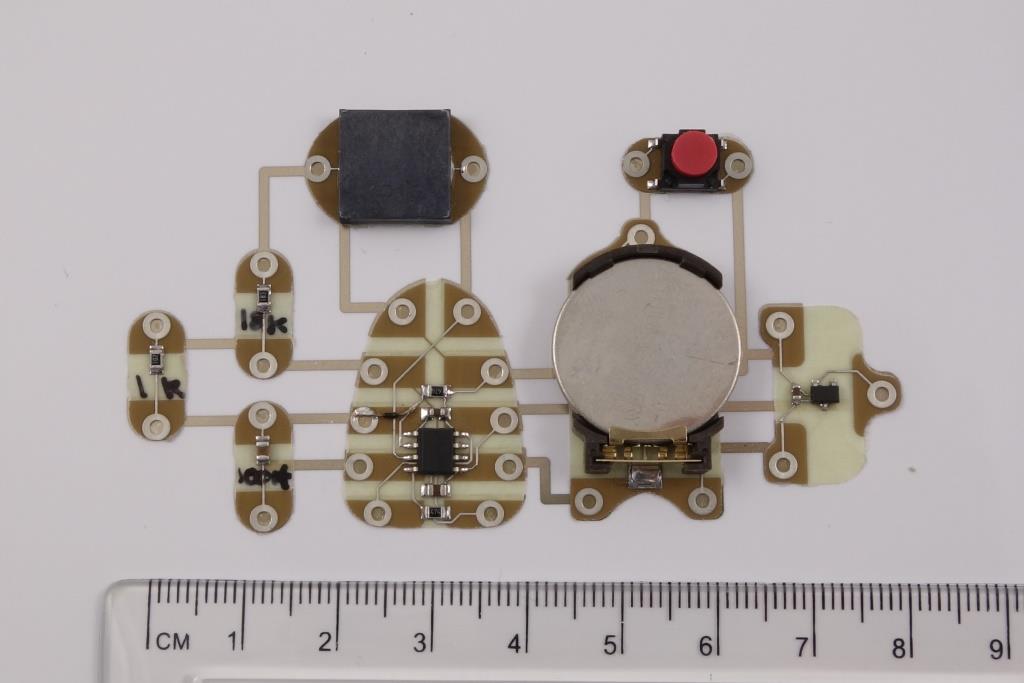Circuit stickers are a new way to build electronic prototypes very quickly. Physical interface elements such as LEDs, sounders, buttons and sensors are stuck onto a cheap and easy-to-make substrate. We use a special type of conductive double-sided tape and the substrate provides the necessary electrical connectivity. The resulting assembly may include a battery for standalone operation, or it can be interfaced to a microcontroller or PC.
The wiring which connects circuit stickers together can be created in different ways. We are particularly interested in instant inkjet printing – this is a way of quickly and cheaply printing conductive circuits onto photo-paper using a domestic inkjet printer. This technology is available commercially from a University of Tokyo spin-out. Circuit stickers provide a versatile and low-cost way of extending instant inkjet printing. They support quick and easy construction of physically flexible and functional interactive prototypes. We think that these technologies have potential in design exploration, research prototyping, education and for hobbyist projects.
This work is a collaboration between many different people with diverse backgrounds and interests. In particular, Jie Qi at MIT and Bunnie Huang are particularly interested in empowering designers, artists, engineers, kids, students and teachers to build interactive projects. They have launched a set of stickers for sale.

We would ultimately like to combine these techniques with 3D printing so that devices with both physical form and electronic functionality can be prototyped and manufactured quickly and easily.
